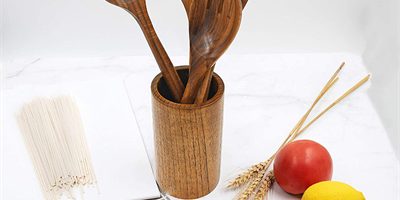In the modern world of kitchen tools and gadgets, wooden utensils stand out as an enduring symbol of tradition and craftsmanship. In this blog, we’ll delve into the timeless allure of wooden utensils, showcasing how they represent an age-old culinary tradition.
Craftsmanship and Heritage
Wooden utensils are the result of skilled craftsmanship passed down through generations. Each piece is a testament to the dedication of artisans who have honed their woodworking skills over centuries. The rich heritage behind wooden utensils adds depth and authenticity to your culinary experience.
Natural Beauty
The natural beauty of wooden utensils is unparalleled. Crafted from various wood types like maple, cherry, and olive, each utensil possesses a unique character defined by its grain, color, and texture. They not only serve as practical kitchen tools but also as exquisite pieces of art.
Versatility and Functionality
Wooden utensils offer unparalleled versatility in the kitchen. They can handle a wide range of cooking tasks, from stirring and sautéing to serving and tossing. Their ergonomic designs ensure ease of use and comfort during extended cooking sessions.
Connection to Tradition
Using wooden utensils connects you to culinary traditions that have withstood the test of time. These utensils have been a part of kitchens across cultures for centuries, symbolizing the continuity of cooking methods and techniques.
Sustainable and Eco-Friendly
Wooden utensils align with contemporary values of sustainability and eco-friendliness. Many manufacturers prioritize sustainable sourcing of wood, ensuring that forests remain healthy and vibrant. Additionally, wooden utensils are biodegradable, contributing to a circular and eco-conscious kitchen ecosystem.
Caring for Wooden Utensils
To maintain the longevity and beauty of wooden utensils, proper care is essential. Handwashing with mild soap and lukewarm water, seasoning to prevent drying, and thorough drying after use are key steps in their maintenance.
In conclusion, wooden utensils are not just kitchen tools; they are vessels of tradition, craftsmanship, and natural beauty. Their versatility, connection to heritage, sustainability, and role as functional art pieces make them a cherished part of the culinary world.















